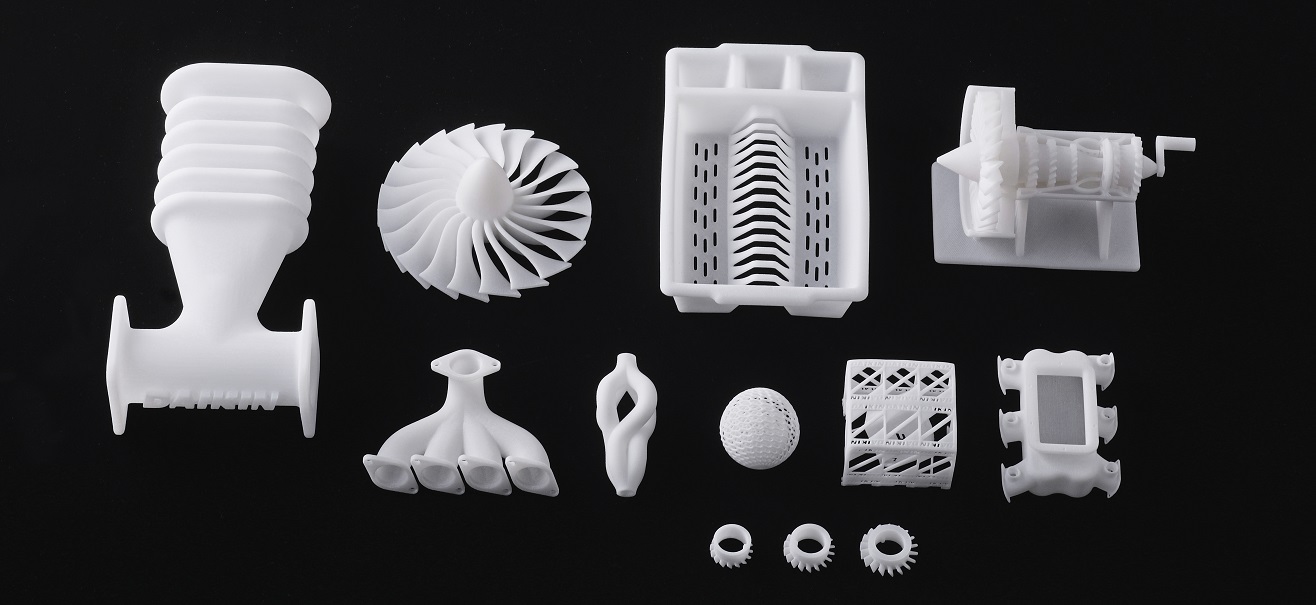Additive manufacturing (under development)
Additive manufacturing is characterized by the on demand production and molding of complex shapes. Its use in many industrial fields, such as semiconductors, aerospace, medical care, automobiles, and construction, has begun.
Daikin has developed additive manufacturing technology for fluoropolymers, and is expanding its applications.
INDUSTRY TRENDS
With additive manufacturing technology, it is possible to create complex shapes that would be impossible using conventional molds. This technology also allows machines to be constructed directly from digital design data without using molds and jigs. Additive manufacturing includes modeling methods such as "material extrusion", "liquid tank photopolymerization", "binder injection", "material injection", "powder bed fusion bonding", and "sheet lamination".
Daikin has developed our NEOFLON PFA material for powder bed fusion bonding. Since PFA has excellent heat and chemical resistance, this additive manufacturing model can be applied to semiconductor manufacturing, medical equipment, chemical plants industry, and oil and gas fields.
Additive manufacturing parts with Fluoropolymer NEOFLON PFA

> [Technical report] Fluoropolymer PFA for powder bed fusion (under development)
This article presents PFA powder, suitable for this method, and the physical properties of molds.
APPLICATIONS

Aerospace
Even in small batch products with specialized shapes, it is possible to mold fluoropolymer products with required durability and high reliability.
![]()
Semiconductor manufacturing
It is possible to mold fluoropolymer products with complicated shapes and excellent chemical resistance, which was difficult with conventional molding technology.

Oil and Gas
Whether complicated shapes or small batch manufacturing, it is possible to mold fluoropolymer products with excellent durability in harsh use environments.



